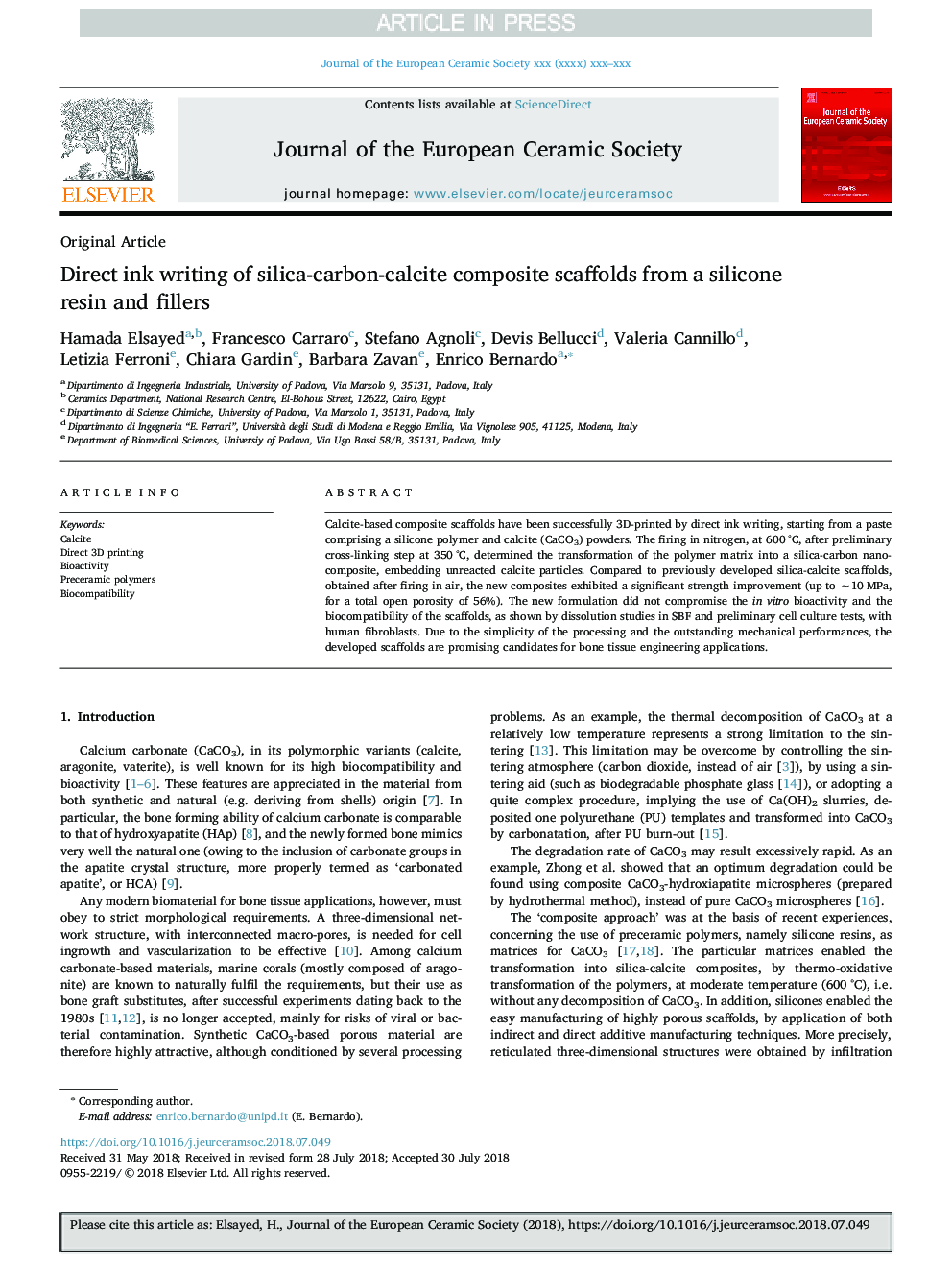| Article ID | Journal | Published Year | Pages | File Type |
|---|---|---|---|---|
| 8948572 | Journal of the European Ceramic Society | 2018 | 8 Pages |
Abstract
Calcite-based composite scaffolds have been successfully 3D-printed by direct ink writing, starting from a paste comprising a silicone polymer and calcite (CaCO3) powders. The firing in nitrogen, at 600â°C, after preliminary cross-linking step at 350â°C, determined the transformation of the polymer matrix into a silica-carbon nano-composite, embedding unreacted calcite particles. Compared to previously developed silica-calcite scaffolds, obtained after firing in air, the new composites exhibited a significant strength improvement (up to â¼10âMPa, for a total open porosity of 56%). The new formulation did not compromise the in vitro bioactivity and the biocompatibility of the scaffolds, as shown by dissolution studies in SBF and preliminary cell culture tests, with human fibroblasts. Due to the simplicity of the processing and the outstanding mechanical performances, the developed scaffolds are promising candidates for bone tissue engineering applications.
Related Topics
Physical Sciences and Engineering
Materials Science
Ceramics and Composites
Authors
Hamada Elsayed, Francesco Carraro, Stefano Agnoli, Devis Bellucci, Valeria Cannillo, Letizia Ferroni, Chiara Gardin, Barbara Zavan, Enrico Bernardo,
